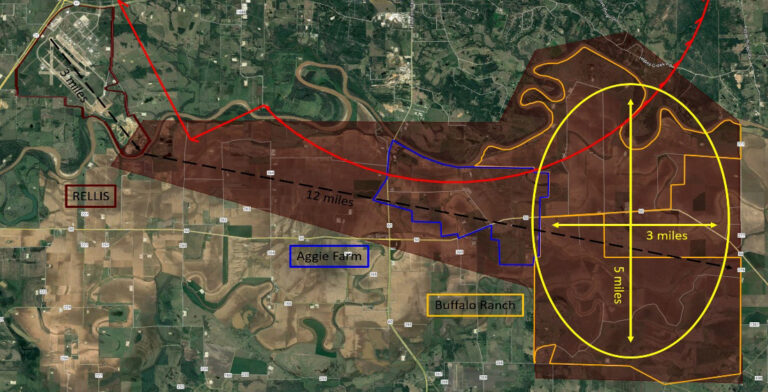Operations
Proving Grounds

The Texas A&M RELLIS Proving Grounds is a longstanding hub for cutting-edge research and technology advancement. The Proving Grounds’ extensive scope includes but is not limited to, roadside safety, physical security, traffic engineering, emissions, sediment and erosion control, pavements and materials, structures, roadside signs and markings, and connected and automated vehicles, all of which are under the NextGen Distributed Antennae System (DAS). This dynamic environment positions the Proving Grounds at the forefront of innovation, making it a pivotal space for advancing research and technology on a global scale.
See our catalog for more information.
- Utilizing the Proving Grounds – The RELLIS Reservation System is used to schedule research and testing on the Proving Grounds. The RELLIS Reservation System requires a TAMUS Unique Identification Number (UIN). For those without a UIN, a TAMUS-affiliated sponsor is required.
- Secure Area Access – The RELLIS Campus Proving Grounds is a controlled-access environment.
- Touring the Proving Grounds – For tours of the Proving Grounds contact operations@rellis.tamus.edu.
Drone and UAS Submissions
At RELLIS, Unmanned Aircraft Systems (UAS) operations play a pivotal role in various research endeavors and practical applications. With its expansive grounds and state-of-the-art facilities, RELLIS provides an ideal environment for testing and advancing UAS technology and counter-UAS operations. Additionally, the campus serves as a hub for UAS training and certification programs. (RELLIS UAS Application Instructions)
RELLIS provides prime space for using drones by multiple agencies and industry partners as part of their ongoing research.

UAS Capabilities:
- Part 107 operations.
- 3 FAA Part 91 Certificates of Authorization (COAs).
- UAS Operations at or below 1,000’
- UAS Operations over 55lbs
- Beyond Visual Line of Sight (BVLOS) Operations
- BVLOS UAS Corridor is equipped with advanced infrastructure and support systems that facilitate a wide range of experiments and trials, from testing long-range communication and navigation systems to evaluating autonomous flight algorithms and collision avoidance mechanisms. Researchers and industry partners have the opportunity to collaborate within this dedicated space, spanning over 12 miles, to explore innovative applications such as aerial delivery, infrastructure inspection, and emergency response.
- Aviation Radio Network
With the popularity of UAS, the FAA has issued guidelines for safe operation, and The Texas A&M University System and the RELLIS Campus have initiated a program to ensure compliance with the applicable rules and regulations. Most flights on The RELLIS campus will fall under Part 107 of the FAA rules available and hyperlinked below:
To request the use of drones at the RELLIS Campus, please visit the hyperlinked website below:
Unmanned Aircraft System Operations (UAS) – Office of Risk Management (tamus.edu)
Contact



